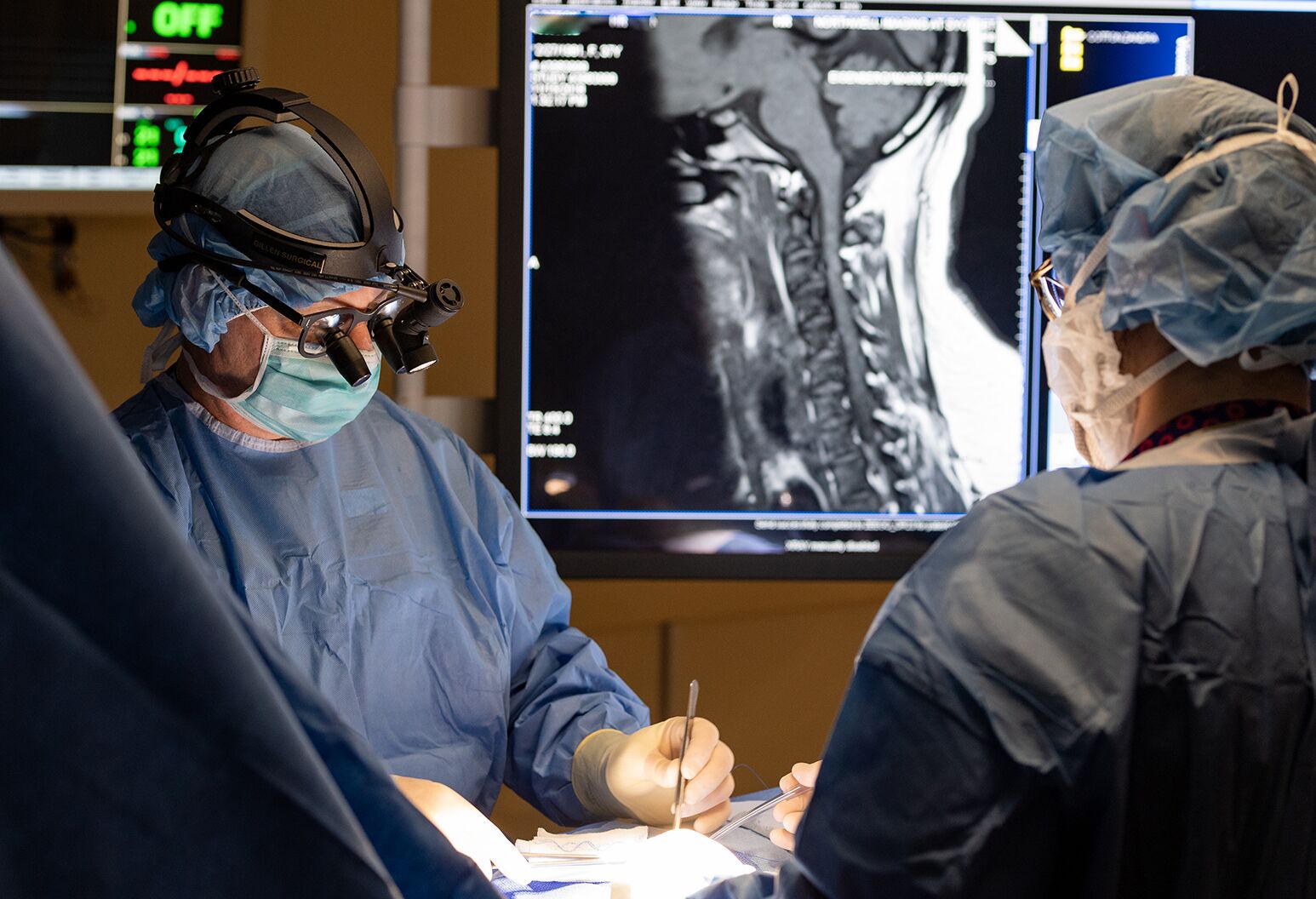The Most Up To Date Innovations by the Best Spine Surgeons in St Louis MO
The Most Up To Date Innovations by the Best Spine Surgeons in St Louis MO
Blog Article
A Summary of Back Problems That Often Lead To Surgical Therapies
Spine conditions such as herniated discs, spinal stenosis, and degenerative disc condition regularly demand surgical interventions when traditional treatments fall short to ease relentless signs and symptoms. Understanding the subtleties of each condition and the corresponding surgical choices, such as discectomy or spinal blend, is vital for reliable management.
Herniated Discs
Although lots of individuals with herniated discs might locate relief via traditional treatments, surgical procedure comes to be a necessary consideration when signs and symptoms get worse or persist - best spine surgeons in st louis mo. A herniated disc happens when the soft internal gel of a spinal disc protrudes via its external layer, potentially leading and pressing nearby nerves to pain, feeling numb, or weak point in the extremities
Conventional administration normally includes physical treatment, discomfort medicines, and corticosteroid shots, which aim to lower swelling and improve feature. Nonetheless, in cases where these methods stop working to minimize incapacitating signs and symptoms, surgical options might be discovered.
The most common medical procedure for herniated discs is a discectomy, which entails the elimination of the herniated part of the disc to soothe stress on the impacted nerve origin. In extra extreme situations, spine combination might be essential to support the impacted vertebrae.
People are advised to discuss the possible risks and advantages of surgery with their doctor to make a notified decision. Inevitably, the goal of any kind of medical treatment is to restore feature, ease pain, and enhance general lifestyle for people struggling with herniated discs.
Spine Stenosis
Back constriction happens when the rooms within the spinal column slim, leading to boosted stress on the spine cable and nerves. This condition can create in numerous areas of the back, including the lumbar and cervical areas, frequently due to age-related adjustments, such as degenerative disc illness, arthritis, or thickening of tendons.
Individuals with back stenosis may provide with signs and symptoms that include pain, tingling, prickling, or weak point, mostly in the legs or arms. These symptoms can be aggravated by activities that involve standing or walking, frequently leading people to look for relief via traditional therapies like physical therapy, medicines, or epidural steroid injections.
Nevertheless, when these non-surgical treatments fail to supply ample relief, surgical choices might be considered. Common surgical treatments for back constriction include laminectomy, which involves the removal of component of the vertebra to relieve pressure, and spinal combination, which supports the damaged location.
Spondylolisthesis
Spondylolisthesis happens when one vertebra slides onward over another, leading to misalignment of the spinal column. This problem can arise from different variables, consisting of genetic defects, trauma, or degenerative changes in the spine. It is most frequently observed in the back area, specifically at the L4-L5 and L5-S1 levels.

Treatment choices vary based upon the intensity of the slippage and the signs and symptoms presented. Conventional procedures, including physical therapy, discomfort management, and task alteration, are usually the first line of defense. When non-surgical techniques fall short to ease signs and symptoms or when considerable nerve compression is existing, surgical treatment might be warranted. Surgical alternatives can consist of spine combination or decompression treatments, targeted at recovering alignment and alleviating neurological signs. Early diagnosis and proper monitoring are essential for ideal results in patients with spondylolisthesis.
Degenerative Disc Illness

The problem can be detected through a combination of scientific examination, imaging research studies, and individual background. When these strategies stop working to advice give adequate relief, medical treatments might be thought about.
Surgical alternatives for DDD might consist of back blend or fabricated disc substitute, focused on stabilizing the affected section and minimizing discomfort (best spine surgeons in st louis mo). Inevitably, the choice of therapy is individualized, considering the extent of the condition, patient health, and lifestyle elements
Spine Tumors

What elements add to the advancement of lumps within the spine, and exactly how do they show up in individuals? Spine lumps can occur from different factors, including genetic tendency, environmental influences, and pre-existing clinical problems. They can be categorized as primary growths, coming from the spinal column, or additional growths, which spread from other regions of the body. Clients might offer with a series of symptoms, including localized discomfort, neurological deficits, weak point, or modifications in bowel and bladder feature, depending on the growth's size and area.
Medical diagnosis typically includes imaging research studies such as MRI or CT scans, which help mark the growth's attributes and effect on surrounding frameworks. In examining treatment alternatives, the lump's type, grade, and area are important considerations. Surgical treatment may be warranted to relieve signs and symptoms, obtain a biopsy, or get rid of the growth entirely. The objective of surgery is usually to decompress neural elements and support the back. Adjuvant treatments, consisting of radiation or chemotherapy, might likewise be essential depending upon the tumor's nature. Early detection and treatment are important for optimizing results in patients with spine lumps.
Final Thought
In recap, back conditions such as herniated discs, spine constriction, spondylolisthesis, degenerative disc condition, and spinal tumors often demand medical intervention due to their prospective to create substantial pain and functional disability. While conventional therapies might offer short-term relief, surgical choices come to be essential when symptoms persist or intensify. Prompt medical diagnosis and treatment play a crucial role in restoring function and enhancing the quality of life for affected individuals, underscoring the significance of extensive spine care.

Report this page